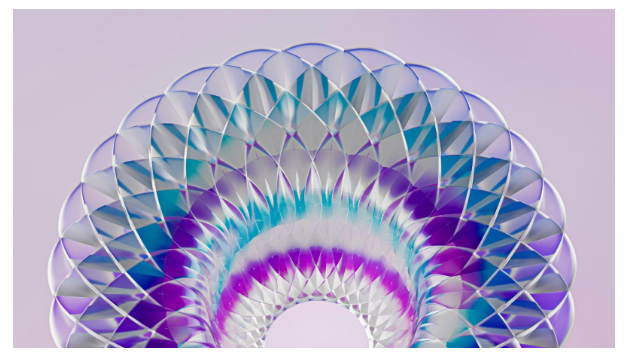The Future of 3D Product Customizer Services: Trends and Predictions for 2024

In the dynamic world of B2B commerce, 3D product customizers are rapidly becoming indispensable tools, empowering customers to tailor products to their precise specifications. As businesses increasingly seek to provide personalized experiences to differentiate themselves in crowded markets, the role of 3D customization technologies has grown more critical. Staying ahead of emerging trends in this technological domain is not just advantageous; it’s essential for companies aiming to maintain and enhance their competitive edge. This article delves into the future trends and predictions for 3D product customizerservices, providing insights that businesses can leverage to stay at the forefront of innovation in 2024 and beyond.
Advances in Technology
The integration of AI and machine learning into 3D product customizers is setting a new standard for automation and predictive functionality. These technologies enable configurators to learn from user interactions, improving their ability to predict customer preferences and suggest customized options that align more closely with individual needs. This not only enhances the user experience but also streamlines the customization process, making it faster and more efficient.
Furthermore, advances in rendering technology are revolutionizing the way products are visualized in 3D. Modern rendering techniques allow for more realistic and detailed visualizations, which are crucial for customers needing to evaluate complex products like machinery or intricate jewelry designs. These improvements in 3D rendering ensure that what the customer sees is closer to the final product, reducing the gap between virtual prototypes and real-world outcomes.
By leveraging AI, machine learning, and state-of-the-art rendering, 3D product customizers are not just tools for customization but also platforms for immersive customer engagement. These technological advancements are vital in driving the effectiveness and appeal of 3D configurators, providing businesses with powerful means to captivate and satisfy their clients.
Enhanced User Experience
The evolution of UX/UI design in 3D configurators is significantly enhancing their intuitiveness and user-friendliness. Modern configurators are designed with user-centric principles that prioritize ease of navigation and simplicity, ensuring that even users with limited technical skills can effectively customize products. This shift towards more refined interfaces involves the use of clean layouts, straightforward menus, and interactive elements that provide immediate feedback based on user actions, thereby reducing learning curves and enhancing satisfaction.
Additionally, as digital interactions increasingly transition from desktop to mobile platforms, the importance of mobile optimization in 3D configurators cannot be overstated. Responsive design that adjusts to various screen sizes and orientations is crucial, ensuring that mobile users experience the same functionality and visual quality as desktop users. This adaptability not only broadens the potential user base but also caters to the growing trend of mobile-first browsing, thereby expanding market reach and engagement.
Industry-Specific Adaptations
Industries such as automotive, furniture, and fashion are rapidly integrating 3D configurators to cater to specific needs and enhance their customer’s buying experience. In the automotive sector, configurators allow customers to customize everything from the engine specifications to the interior finishes, providing a detailed preview of the vehicle before purchase. Similarly, furniture companies use these tools to let customers choose different fabrics, finishes, and accessories, aligning the final product with their space and style preferences.
The impact of such customization extends beyond customer interaction to affect production processes and supply chain management. As companies adopt more flexible manufacturing processes to accommodate custom orders, there is a shift towards just-in-time production and lean inventory practices. This approach minimizes waste and reduces the cost associated with holding large inventories, while still allowing for the individual customization that configurators offer. The ability to integrate real-time customer data from configurators into supply chain operations further enhances efficiency, making it possible to predict demand trends and manage resources more effectively.
Sustainability Aspects
As 3D customization technologies advance, integrating sustainability into their frameworks has become imperative. Many companies are now prioritizing the use of eco-friendly materials in their customizable products, from biodegradable fabrics in fashion to recycled metals in electronics. Additionally, sustainable production methods are being implemented to minimize waste and energy consumption. These methods often involve precision manufacturing processes that produce only what is needed based on customer specifications, reducing excess production.
Future Predictions and Strategic Actions
Industries such as automotive, furniture, and fashion are rapidly integrating 3D configurators to cater to specific needs and enhance their customer’s buying experience. In the automotive sector, configurators allow customers to customize everything from the engine specifications to the interior finishes, providing a detailed preview of the vehicle before purchase. Similarly, furniture companies use these tools to let customers choose different fabrics, finishes, and accessories, aligning the final product with their space and style preferences.
The impact of such customization extends beyond customer interaction to affect production processes and supply chain management. As companies adopt more flexible manufacturing processes to accommodate custom orders, there is a shift towards just-in-time production and lean inventory practices. This approach minimizes waste and reduces the cost associated with holding large inventories, while still allowing for the individual customization that configurators offer. The ability to integrate real-time customer data from configurators into supply chain operations further enhances efficiency, making it possible to predict demand trends and manage resources more effectively.
Sustainability Aspects
As 3D customization technologies advance, integrating sustainability into their frameworks has become imperative. Many companies are now prioritizing the use of eco-friendly materials in their customizable products, from biodegradable fabrics in fashion to recycled metals in electronics. Additionally, sustainable production methods are being implemented to minimize waste and energy consumption. These methods often involve precision manufacturing processes that produce only what is needed based on customer specifications, reducing excess production.
Future Predictions and Strategic Actions
Looking ahead to 2024, the future of 3D product customizers is poised for further innovation, particularly in integrating more immersive technologies like augmented reality (AR) and virtual reality (VR), which will enhance the user experience by allowing customers to see and interact with customizable products in their own environment. Additionally, further advancements in AI will likely make these tools even more intuitive, predicting customer preferences with greater accuracy and offering more precise customization options.
For businesses aiming to stay competitive with their 3D customizer services, staying abreast of technological advancements is key. Investing in continuous improvement of the configurator’s capabilities, focusing on enhancing user experience and sustainability, and maintaining ethical standards in data handling will be crucial. These actions will not only satisfy customer expectations but also ensure that the business remains at the cutting edge of the digital customization trend.
Conclusion
As we look towards the future of 3D product customizers, it’s clear that these tools are set to become even more integral to business strategies across various industries. The integration of AI and machine learning will further refine customization options, offering predictive personalization that aligns more closely with customer preferences. Augmented Reality (AR) enhancements will provide immersive experiences, allowing customers to visualize products in their intended environment, thus bridging the gap between digital and physical realms.
Staying informed and agile, continually adapting to technological advancements, and upholding ethical standards will be crucial for businesses wanting to leverage the full potential of 3D configurators. Companies must invest in ongoing research and development to stay ahead of the curve, ensuring their customization tools are cutting-edge and user-friendly. Additionally, maintaining robust data privacy measures will be essential in building and preserving customer trust.
Those who embrace these trends and commit to continuous improvement will find themselves well-equipped to lead in a marketplace that increasingly values personalization and sustainability. By integrating these advanced technologies and sustainable practices, businesses can not only meet but exceed the evolving expectations of their customers, securing a competitive edge in the dynamic landscape of digital commerce.
Read More From Techbullion And Businesnewswire.com







